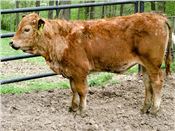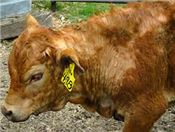Livestock Producers Beware: It Is The Season For Lice
DAVID BURTON
MT. VERNON, MO.
Have you noticed your cattle looking a little scruffy lately? According to Eldon Cole, livestock specialist with University of Missouri Extension, the cattle may have rubbed off some hair and have lost a bright sheen to their hair coat.
Producers may have even noticed the cattle rubbing on posts, trees and wire fences.
“Chances are your cattle are fighting lice. Lice didn’t just appear out of nowhere,” said Cole.
Lice eggs require from three to six weeks to become adults. That means they have been growing and causing some discomfort to your cattle for several weeks.
“With winter feeding and cattle being in closer proximity to one another than in warmer weather, it is easy for lice to spread across the herd,” said Cole. “As we move into the calving season, newborn claves can pick up lice as they nurse a lousy cow. Chances are some of your cows may even be “carriers” of lice more than others.”
Several species of lice exist and most are bloodsuckers. There is a biting louse that feeds on skin cells that can be annoying to cattle.
“The most damage usually comes from the bloodsuckers,” said Cole.
There are several methods to control lice, such as sprays or dips, pour-ons, injectables and self-treatments, like back rubbers and dust bags.
“The important thing is to do something and the sooner the better,” said Cole.
To best identify if lice are present on your cattle, Cole recommends close examination in a head chute.
“The sucking lice are usually found on the head, neck, withers, around the tail, brisket and the inner surface of the legs,” said Cole. ∆
DAVID BURTON: County Engagement Specialist in Community Economic Development, University of Missouri

